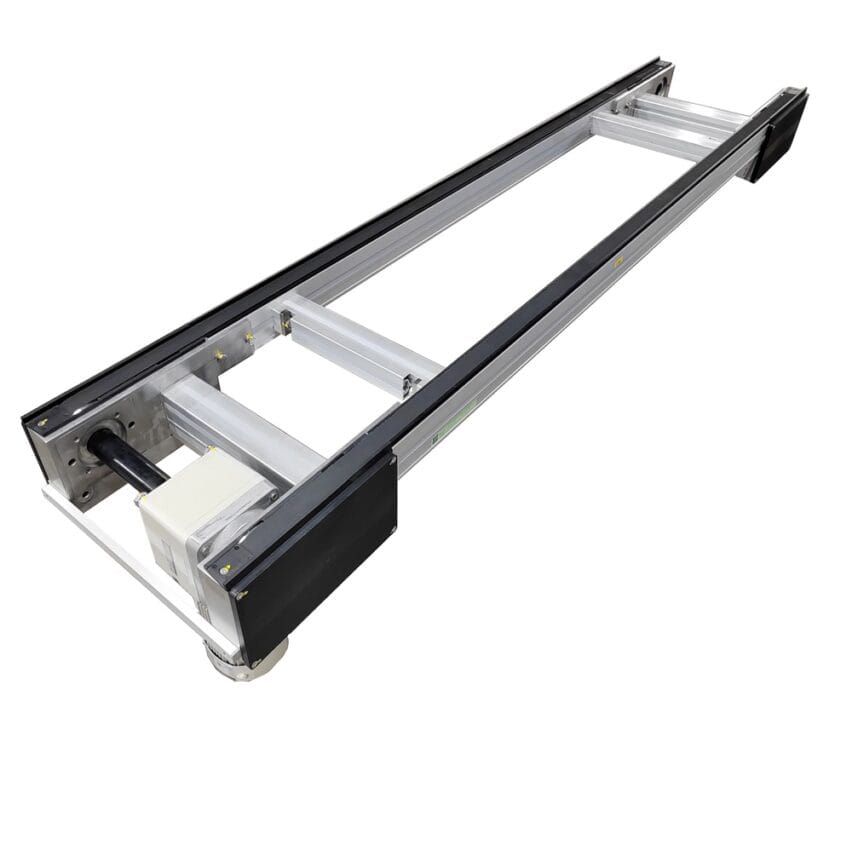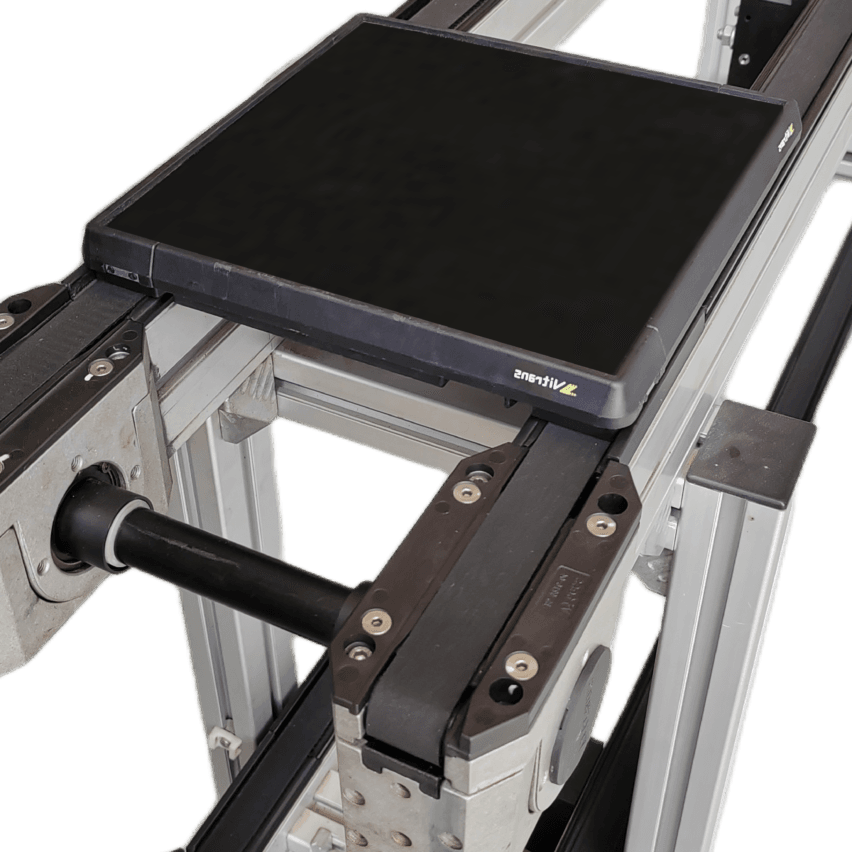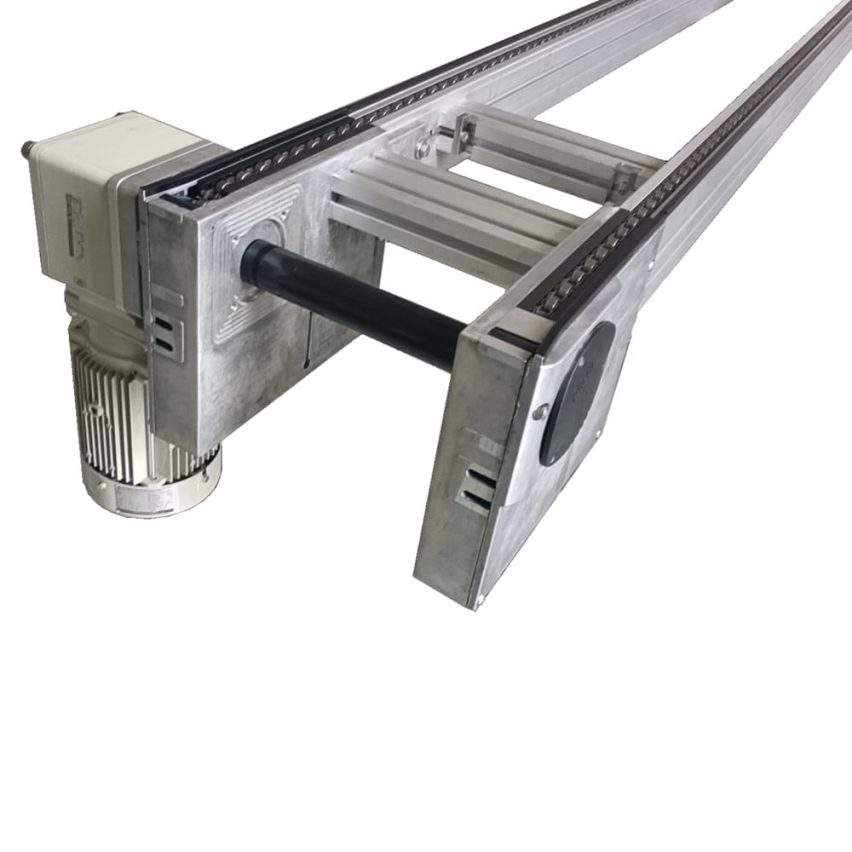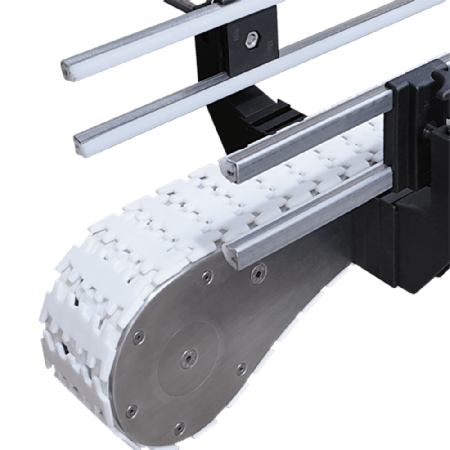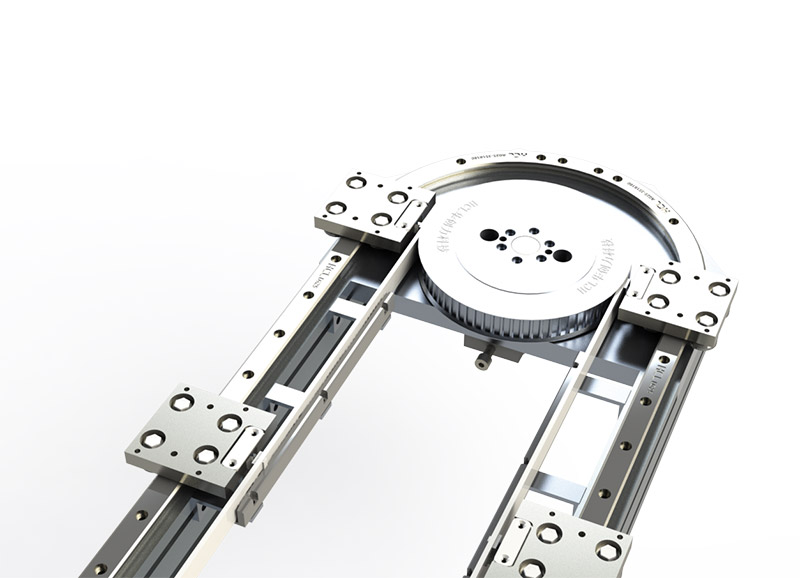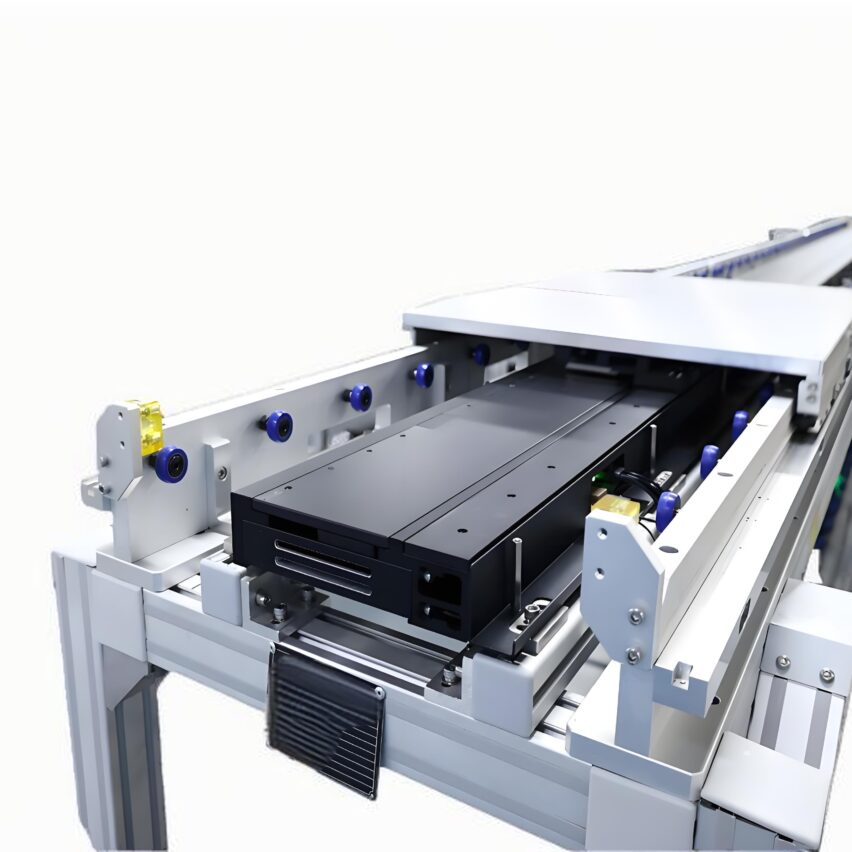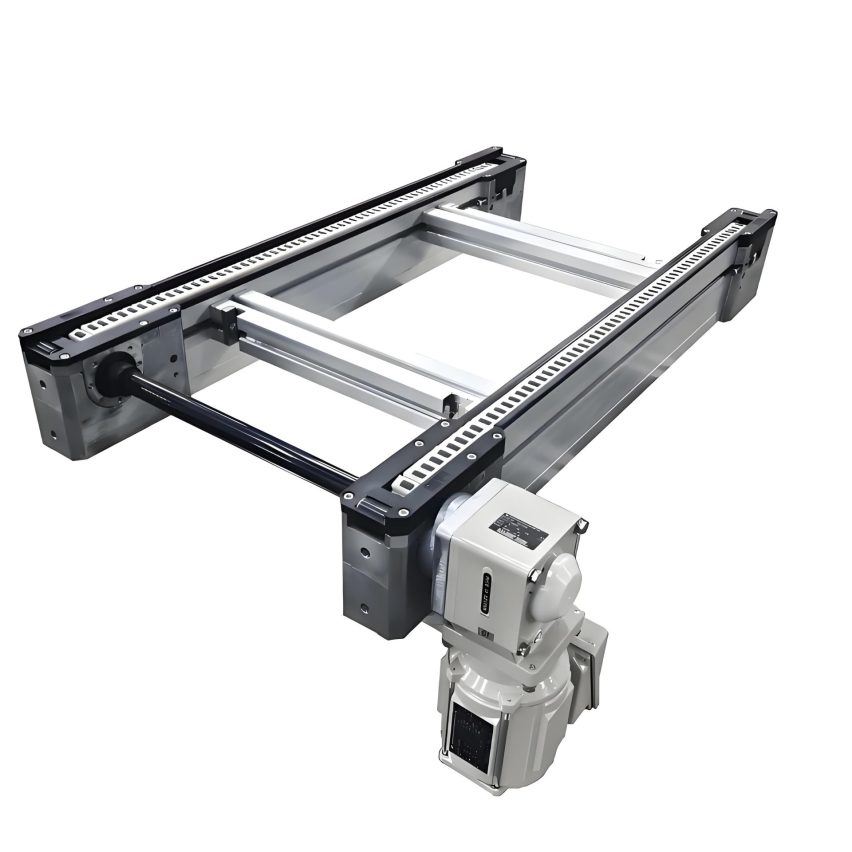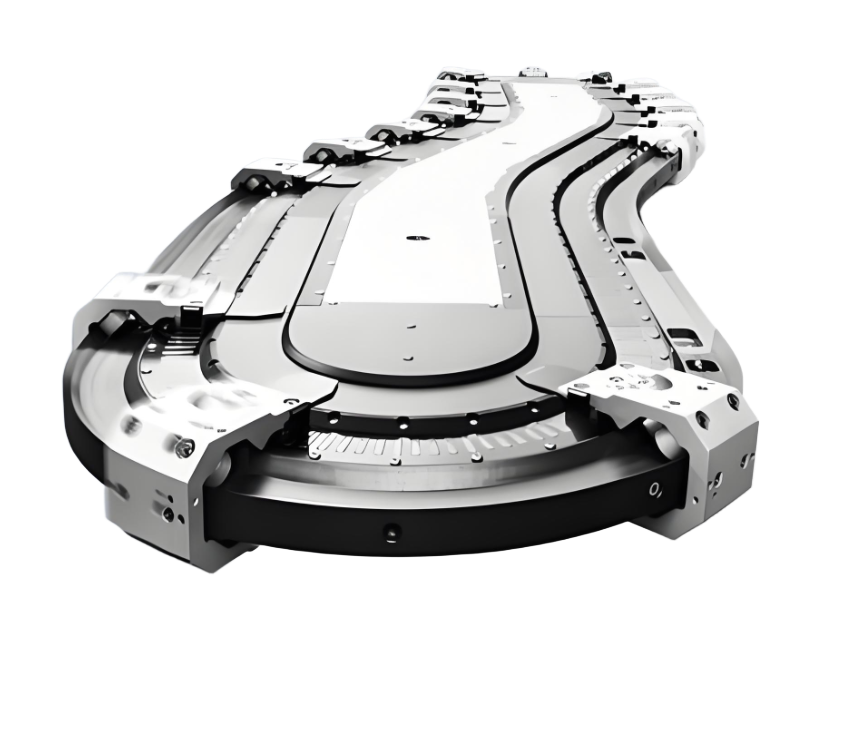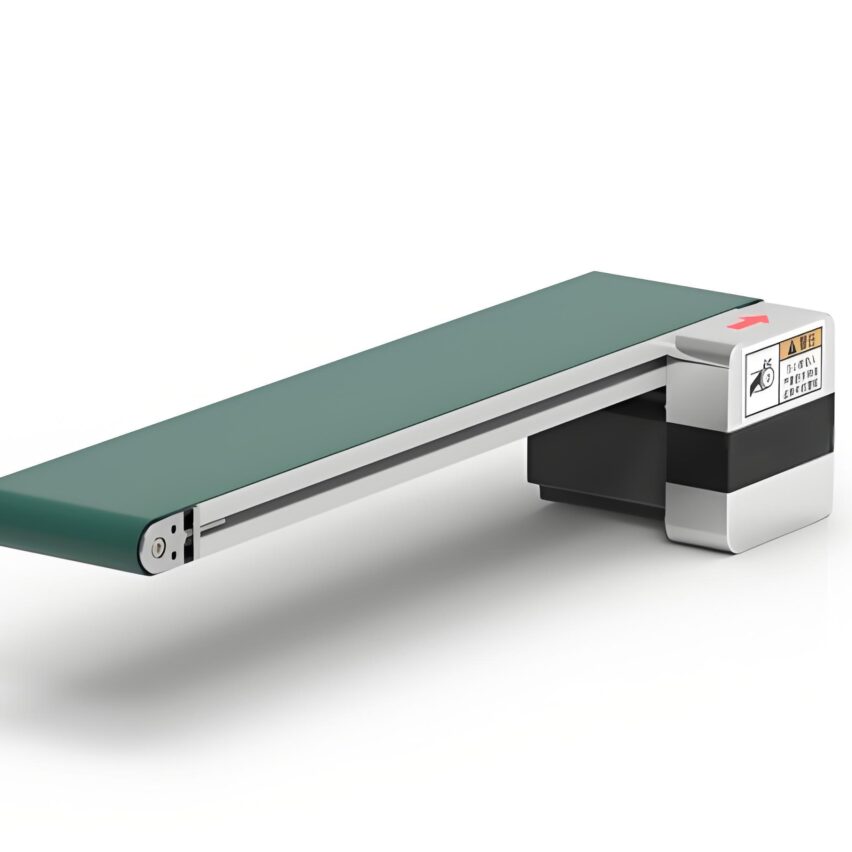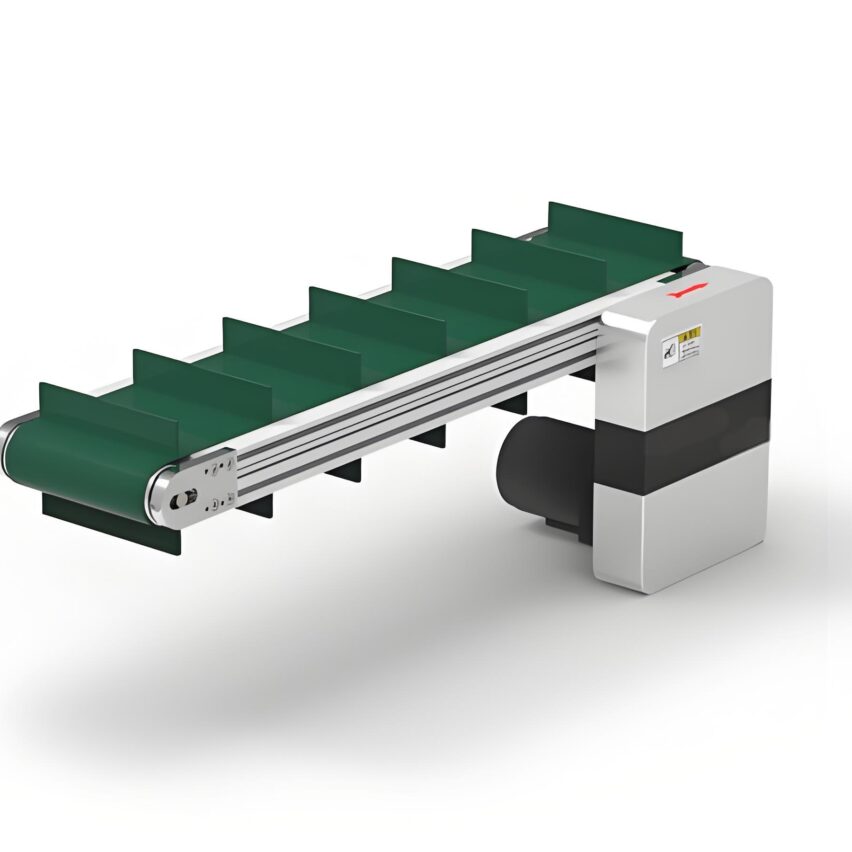Why is it that some assembly lines are lightning fast and others can carry a thousand pounds? The key is in your choice ofIs the multiplier chain 2.5x or 3x?Today we are going to talk about the difference between the two "efficiency brothers" in the field! Today we break open the crumbs to talk about the difference between the "efficiency brothers" in the field, after reading to ensure that you no longer confused about who to choose!
🔧I. 2.5 times speed chain: "Flexible small hand" for small and light loads.
Core features: Chain speed is slow (usually 5-15 m/min) but the workpiece can run out2.5x speed(e.g. chain 1m/s, workpiece 2.5m/s).
Why is it designed this way?The rollers are about 1.5 times larger in diameter than the rollers, and the physical leverage amplifies the speed, but the construction is lighter.
Applicable Scenarios::
- Electronic assembly lineMobile phone parts, chips and other "delicate" small parts (single point ≤ 500kg), fast and anti-static!
- Appliance assembly: Remote control, small motor assembly line, low cost and power saving
- Packaging/Warehousing: Medium load turnaround scenarios, e.g. crating of household chemicals
Pitfall Warning::
- Never stack heavy goods! Over 500kg rollers are easy to deform, repair once stop production for two days!
- Use with caution in high-temperature workshops: nylon rollers may soften at over 80°C, and the speed will drop by half directly after deformation.
real-life example::
A remote control factory with 2.5 times the speed of the chain, the daily production capacity from 50,000 to 80,000 units, but after trying to transport the metal shell (more than 700kg), three days to change six sets of rollers - the boss intestines are repenting.
🏭Second, 3x speed chain: the "steel general" in heavy load scenarios.
Core features: Tooling plate speed up to chain3 times(Chain 1m/s, workpiece 3m/s), but the overall speed is pressed to ≤ 10m/min to ensure stability, single point to carry 4000kg without difficulty.
Heavy Duty Tips::
- The roller diameter is the roller's2x more(D=2d), with more leverage
- All-steel chain + quenching process, hardness increase 30%
Applicable Scenarios::
- automobile manufacturing: Engine and gearbox handling (case in point: a factory transported a 3-tonne cylinder block with zero failures for 8 years)
- Heavy machinery: Machine tool bases, large sheet metal conveyors
- High-paced production lines: TV and air-conditioner assembly line, over 200 units an hour
Deadly details.::
- Overloading = suicideLoad exceeds 30%, failure rate soars 50%! Must be equipped with inverter motor speed stabilisation
- speed trapDon't try to be fast! A factory hard to adjust the speed to 15 m / min, the results of the workpiece thrown flying and damaged equipment!
⚖️Third, the golden rule of selection: 4 steps to avoid the pit of 90%
Step 1: Calculate the "lifeblood" parameters first
- Load formula: True load = (Workpiece weight x 1.5 safety factor) + Plate weight
→ Over 1.5 tonnes? Close your eyes and select 3x speed! - Velocity formula: Chain speed ≤ process beat (sec) x 1.2
→ Beat 30 seconds? Don't exceed 36 sec/mi chain speed
Step 2: The environment determines life and death
| matrix | Selection options | negative example |
|---|---|---|
| High temperature (>150°C) | 3x speed chain + hardened alloy steel | Plain steel chain softened and deformed |
| Moisture/Dust | Stainless steel chain + dust cover | A food factory was unprotected. The chain rusted to death. |
| antistatic | Engineering plastic rollers + conductive grounding | Electronics factory loses millions in chip breakdowns |
Step 3: Cost Don't just look at the quote!
Total Cost of Ownership (TCO)= Price of equipment + 3 years maintenance + Electricity
- 2.5x chain: cheap to buy (save 30%), but doubles maintenance costs for heavy-duty scenarios
- 3x speed chain: it hurts to buy, can be heavy load scenarios energy consumption counter low 20% (steel chain friction is small)
Step 4: Test! Test! Still testing!
- Let the manufacturer do it24 hours full load testRecord these 3 items:
- Is the speed fluctuation >±5%?
- Is the chain temperature >70°C?
- Is the roller deformation >0.3mm?
An auto parts factory to save this step, put into production three days of the whole line collapsed, the daily loss of 200,000!
🧩IV. Special Scene Cracking Method
Scenario 1: A line carrying both phone cases and battery cases? (3x weight difference)
→Optional 2.5x speed chain + inverterHigh speed (3m/s) for light cargo and reduced speed (1m/s) for heavy cargo, saving 150,000 cost compared to hard 3x speed.
Scenario 2: A car assembly line needs to load parts at low speeds as well as transport the body at high speeds?
→Double Speed Multiplier Chain: Low-speed section 0.5m/s hardcover seat, high-speed section 2m/s transfer bodywork
Scenario 3: Frequent starting and stopping of quality control stations?
→3x Speed Chain + Accumulation Module: The stopper lifts up the work plate and the chain runs as usual, with a pause accuracy of ±0.05mm.
💡Personal opinion: Don't be fooled by the "speed multiplier"!
After ten years of production line design, I have seen too many factories follow the trend of 3 times the speed of the chain - as a result, the electronics factory electricity costs more than burning 50%, heavy-duty factory but greedy for cheap 2.5 times the speed of the chain to repair to the collapse ......Doubling speed is not as good as matching demand!
- small or medium size factory: 2.5x speed chain is enough and saves money, but theRollers must be reinforced nylon(Don't save the hundreds!)
- large-scale factory: Directly on3x speed chain + inverter + accumulatorCombination, don't look at the expensive 30%, three years of comprehensive cost against low
- future trends: Flexible production is the order of the day.Adjustable speed chain is the real deal.! But remember: frequent speed regulation has to be done with servo motors, don't believe in mechanical speed regulation nonsense!
One last rant.Run the site three times before signing the contract--Look at the humidity in the workshop, measure the actual weight of the workpiece, and measure the fluctuation of the beat. After all, the assembly line is open for ten years, the cost of choosing the wrong chain can be more painful than divorce!

